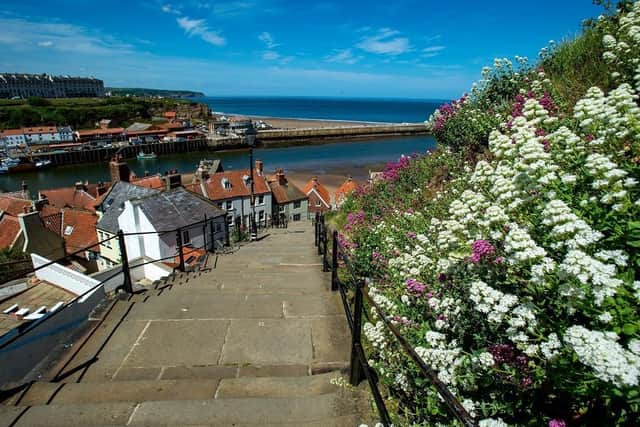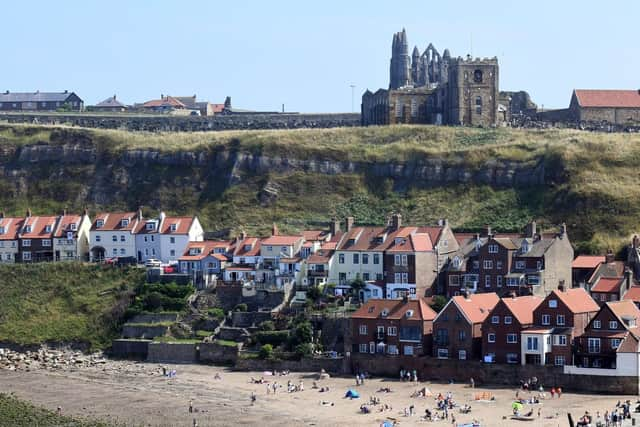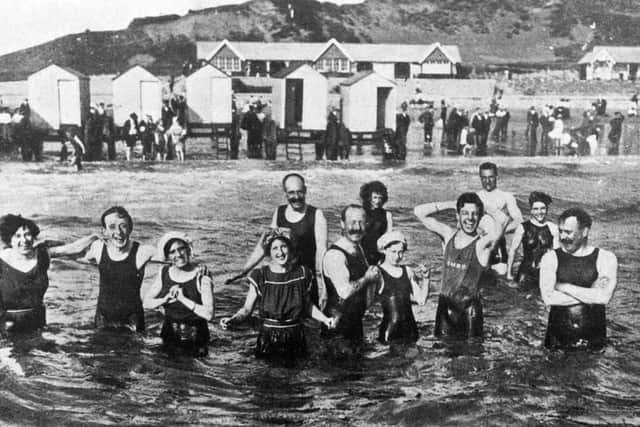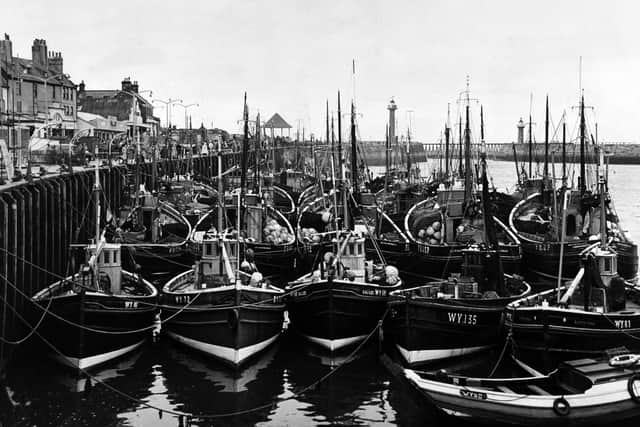From fishing and gemstones, to Vikings and Captain Cook - Whitby has the lot
The mention of the town in that well-known book by Bram Stoker and the resulting industry aimed at attracting black-clad literary disciples, often distracts from Whitby’s place as possibly the most historically significant maritime port on the north-east coast of England.
The early history of Whitby is dominated by religion and the abbey. Named Sinus Fari by ancient Britons, the first known settlement came with the Romans, who built a lighthouse on the East bank of the River Esk. It stood roughly where the abbey now sits and there is also evidence of a small number of dwellings dating from that period. But it was in 657 when Oswy, king of Northumberland, founded a monastery and abbey at what was then called Streonshalh that the place had its first significant inhabitants.
Advertisement
Hide AdAdvertisement
Hide AdIn 664, the Celtic Christian church held its synod at the abbey and decided to adopt the roman calendar. As a consequence, pagan Easter became the Easter we know and celebrate today. That first abbey lasted around two centuries before being destroyed by the Vikings.


They renamed the town Witebi (meaning white settlement) and left the place desolate until the land was gifted to William De Percy following the Norman Conquest. He allowed a new abbey to be built and this one lasted until the dissolution of the monasteries under Henry VIII. The ruins that now tower over Whitby harbour have remained virtually untouched to this day.
The town itself was a relatively modest affair (around 200 inhabitants were recorded in 1540) until the 18th century, when the joint industries of shipbuilding and whaling saw Whitby become one of the most important ports in the country.
Fishing had long taken place from the east bank of the river but the arrival of larger ships, seeking harbour from the harsh North Sea, saw shipbuilding grow steadily until the town boasted around 20 builders by the turn of the 19th century. In 1753, the Whitby Whaling Company was formed and sent its only two ships to Greenland to seek orcas.
Advertisement
Hide AdAdvertisement
Hide AdSo successful was this enterprise that, within 15 years, one of its boats (named Jenny) was noted as one of the top two whalers operating in Britain. During the life of the Whitby whaling industry – it lasted until 1837 – it was recorded that they brought home 2,761 whales, as well as many polar bears and seals. This led to a boom in boiler houses and other associated trade which, along with the shipbuilding boom, saw Whitby finally become a town of note and wealth.


It’s impossible, of course, to discuss Whitby and shipping without mentioning the town’s greatest adopted son, Captain James Cook. Cook was born and raised in North Yorkshire and arrived in Whitby as a teenager, to become an apprentice in the merchant navy.
He learned his trade on the colliers plying coal up and down the east coast. In his mid-20s, he joined the Royal Navy, swiftly rose through the ranks to become a captain and began his illustrious career as arguably Britain’s most prominent maritime explorer. The ships on which he sailed his greatest adventures – HMS Endeavour, HMS Resolution and HMS Discovery – were all built in Whitby and they allowed Cook to map Polynesia, reach Australia, New Zealand and Hawaii and claim numerous lands and resources for the crown.
The effect Cook had on Whitby has been well documented but less well known is his influence on smaller towns and villages throughout Yorkshire. One minor example is the orchard village of Husthwaite. Cook would trade used timbers from his ships for fruit from Husthwaite. On long journeys, Cook’s crew would enjoy apples, plums, pears and other delights, while the villagers of Husthwaite built their houses from brine-soaked beams from ships that Cook had sailed all over the globe.
Advertisement
Hide AdAdvertisement
Hide AdTwo non-maritime but vital contributions to the prosperity and growth of Whitby were created around 200 million years ago, and eventually brought money into the town courtesy of royalty and religion. Millions of years ago, the land we now call North Yorkshire was covered in araucaria, popularly known as Monkey Puzzle trees.


Age and pressure eventually turned the trunks of the trees into an unfavoured form of coal, which was gathered from the beach, buffed to a distinctive matt shine and sold as a gemstone called jet. Meanwhile, in another strata of the earth’s crust, a chemical compound called alum formed and was eventually quarried, burned, extracted and mixed with human urine to create a fixative for dyes.
Neither jet nor alum were significantly important to Whitby until, firstly, the Reformation meant that supplies of alum from Italy (where a papal monopoly controlled worldwide stocks) were curtailed and a home-mined substitute sought by the textile industry.
The Jurassic Yorkshire coastline proved a rich source. Just a few years after the alum industry ended, Queen Victoria chose jet as the stone to form the basis of the black mourning jewellery that she wore for the rest of her life after her husband Albert passed away. Jet became fashionable throughout the world and Whitby proved the most prestigious place to purchase it. Though the trade in jet shrank during the last century, there are still shops selling it in the town and even a museum dedicated to its history.
Advertisement
Hide AdAdvertisement
Hide AdThe arrival of steel boats demanded that the shipbuilding industry move to larger ports and Whitby saw Newcastle take much of the town’s trade along with many of the required craftsmen. Fishing continued but in a much more limited form than in the port’s heyday.


Then, in 1955, a strike at Hull docks saw six ships diverted to Whitby to unload their catches. Though a little unfair on Hull (the city had, after all, once built public toilets to collect urine for Whitby’s alum industry), the event revitalised Whitby’s fishing industry, which moved away from the traditional catch of herring in order to land more profitable cod, haddock and other fish available within the 12-mile limit.
Fishing and tourism are now key to Whitby’s continued success. A town with a noble-but-quirky history has learned to embrace its past and the many visitors arriving every day can see and experience the past still living throughout the steep, winding streets.
Support The Yorkshire Post and become a subscriber today.
Your subscription will help us to continue to bring quality news to the people of Yorkshire. In return, you'll see fewer ads on site, get free access to our app and receive exclusive members-only offers.
Advertisement
Hide AdAdvertisement
Hide AdSo, please - if you can - pay for our work. Just £5 per month is the starting point. If you think that which we are trying to achieve is worth more, you can pay us what you think we are worth. By doing so, you will be investing in something that is becoming increasingly rare. Independent journalism that cares less about right and left and more about right and wrong. Journalism you can trust.
Thank you
James Mitchinson